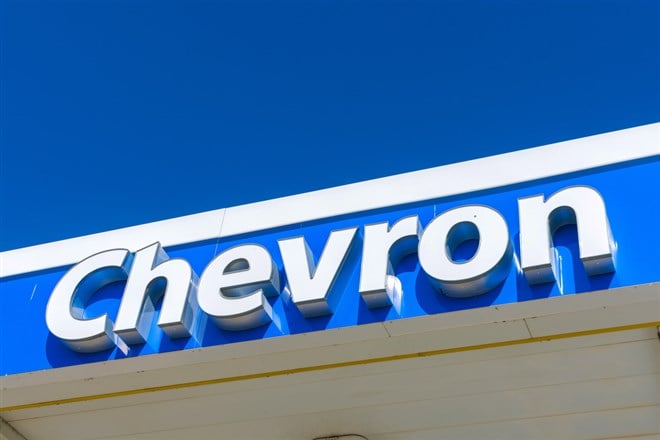
The ex-dividend date for Chevron (NYSE: CVX) has passed, which was November 17.
Investors might be wondering if the stock is still worth buying despite not receiving a dividend in December.
There are some valid considerations for both sides of the argument, so let’s look at the bull and bear case for scooping up Chevron’s shares.
What the Bears Say
There are a few things that go against the idea of buying Chevron ex-dividend.
The first is that its quarterly dividend of $1.42 per share was a strong selling point. That gave it a dividend yield of 3.02% at the time of writing, which is considered high.
Another is that consensus on Wall St is that its stock price will fall to $178.60. This gives it a downside of 3.5% at the time of writing.
Analysts also forecast Chevron’s earnings to decrease 9.10% in the coming year, from $19.12 to $17.38 per share.
And then finally, Chevron insiders over the last quarter have sold $40,107,731 worth of stock, which is another bearish signal.
What the Bulls Say
Despite the predicted downturn in the company's earnings, the consensus is that analysts still consider Chevron a moderate buy.
Breaking down the numbers is that 13 analysts rate this stock a buy. This is compared to seven analysts rating it as a hold, and one analyst rating it as a sell.
Another positive is that Chevron increased its top and bottom lines in its third-quarter results for 2022.
Total revenues increased from $44,710 million to $66,644 million year over year (yoy) for the reported period. Net income also received a boost, growing from $6,115 million yoy to $11,238 million.
Other wins from the report were its return on capital employed (ROCE) growing to 25%, up from 14.3% in the previous corresponding period.
Chevron also considerably strengthened its balance sheet during the reported period. Total assets grew from $239,535 to $259,735 million. Total debt shrank from $31,369 million to $23,641 million.
This and other figures on the balance sheet are reflected in its net debt ratio contracting from 15.6% to 4.9%, meaning strong resiliency and deleveraging of the business.
The Bottom Line
Over the short term, Chevron’s stock price appears to be headed lower. But over the long-term, its altitude is not so clear cut.
The company has made strong improvements in its fundamentals, which include growing its top and bottom lines for the reported period.
Its deleveraged balance sheet also means it’s prepared to ride out some turbulence if the US enters a recession. But if a soft landing eventuates, it could use this room on its balance sheet for additional capital expenditure to ultimately return more value to shareholders over the long term.













